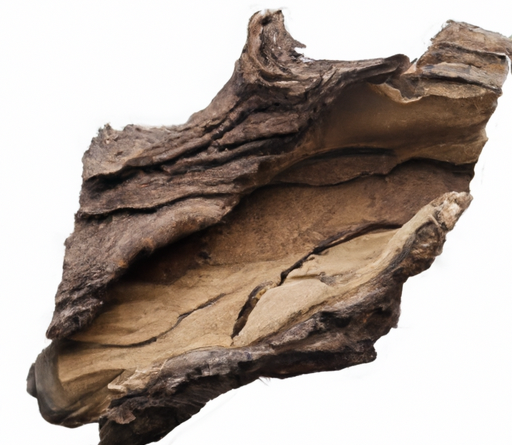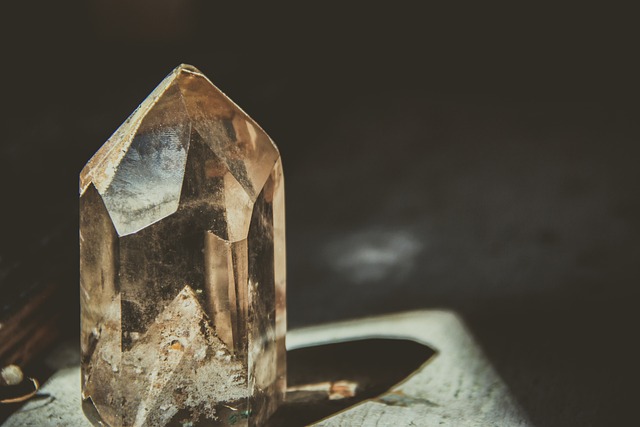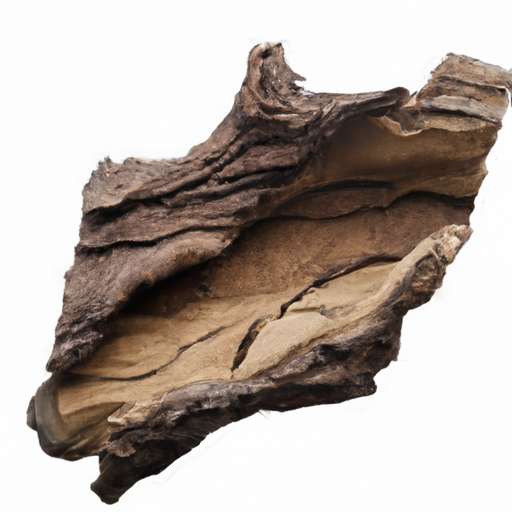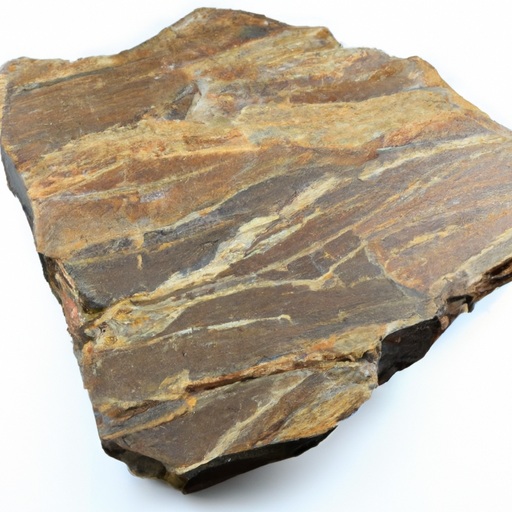
In this article, you will learn how to identify petrified wood. We will provide you with step-by-step tutorials to help you recognize this unique type of fossilized wood. By the end, you will be able to confidently distinguish petrified wood from other types of rocks and fossils. So get ready to broaden your knowledge on this fascinating topic.
Table of Contents
How to Identify Petrified Wood
Petrified wood is a fascinating natural phenomenon that occurs when ancient trees are preserved and transformed into stone through a process called petrification. This unique process results in the formation of beautiful and durable pieces of fossil wood that have been sought after for centuries. If you’re interested in identifying and learning more about petrified wood, this article will guide you through the different characteristics to look for, the tools you’ll need, where to find it, and how to properly preserve and appreciate these ancient treasures.
What is Petrified Wood
Petrified wood, also known as fossilized wood, is a type of fossil that forms when organic material in a tree, such as the cellulose and lignin that make up its cell walls, are replaced by minerals like silica, calcite, and pyrite. This replacement process occurs over millions of years, during which the wood gradually transforms into stone while retaining its original structure and form.
Definition of Petrified Wood
Petrified wood can be defined as the remains of ancient trees that have undergone a process of mineral replacement, resulting in the preservation of the tree’s organic structure and the formation of a stone-like material.
Formation Process of Petrified Wood
The formation of petrified wood begins when a tree is buried under layers of sediment shortly after it dies. Over time, the buried wood absorbs groundwater rich in minerals. As these minerals infiltrate the wood, they slowly replace the organic material in the tree, molecule by molecule. This process can take thousands to millions of years, resulting in the remarkable preservation of the wood’s original structure.
Physical Characteristics of Petrified Wood
Petrified wood shares many physical characteristics with regular wood, but with a stone-like appearance. It often retains the shape and internal structure of the original tree, including its growth rings and bark textures. The coloration of petrified wood can range from earthy browns and reds to vibrant yellows, blues, and purples. The weight and hardness of petrified wood can vary depending on the minerals that replace the organic material. It is generally heavier than regular wood and can range from relatively soft to extremely hard. Petrified wood typically has a smooth and polished appearance due to the replacement of organic materials by minerals.
Signs of Petrified Wood
To properly identify petrified wood, there are several signs or characteristics to look for. These signs indicate the unique transformation of wood into stone and can help distinguish it from other types of rocks or fossils.
Distinctive Coloration
One of the most noticeable characteristics of petrified wood is its vibrant coloration. The minerals present during the petrification process often impart various hues to the wood, creating a beautiful spectrum of colors. Look for shades of red, brown, yellow, blue, or even purple in the specimen you are examining. The presence of these colors, particularly in a wood-like pattern, is a strong indication of petrified wood.
Preserved Tree Rings
Another distinctive feature of petrified wood is the preservation of tree rings. These rings represent growth periods for the original tree and can provide valuable information about its age and environmental conditions in which it grew. Carefully examine the cross-section of the specimen, looking for concentric rings that resemble those of a tree stump. The presence of well-defined tree rings is a clear indication of petrified wood.
Replacement of Organic Material
Since petrified wood is formed through the replacement of organic material by minerals, it often retains the original structure of the wood. Examine the specimen closely for any signs of the wood’s original texture and cellular structure. Look for pores or cell-like structures within the stone that resemble those found in living trees. The preservation of the wood’s structure confirms that you are indeed looking at petrified wood.
Weight and Hardness
One of the easiest ways to differentiate petrified wood from ordinary rocks is by its weight and hardness. Petrified wood is generally heavier than regular wood due to the mineralization process. Additionally, the hardness of petrified wood can vary depending on the minerals present. Use your judgment by feeling the weight and hardness of the specimen, comparing it to regular wood and ordinary rocks. If it feels heavier and has a hardness similar to stone, you may have found petrified wood.
Smooth and Polished Surface
Petrified wood often has a smooth and polished surface due to erosion and weathering over time. This weathering can expose the wood’s internal structure and reveal intricate details. Look for smooth surfaces that show layers of minerals and perhaps even remnants of the original bark. The smooth and polished appearance is a characteristic unique to petrified wood.

Recognizing Petrified Wood
Now that you know what signs to look for when identifying petrified wood, it’s essential to familiarize yourself with the overall appearance of petrified wood and understand how it differs from other rocks and fossils.
Familiarize with Wood Grain Patterns
One of the best ways to recognize petrified wood is to become familiar with wood grain patterns. Inspect various pieces of wood and take note of the different patterns and textures present. This familiarity will help you identify similar features when examining petrified wood specimens.
Identifying Fossils within the Petrified Wood
Petrified wood can sometimes contain fossils or traces of ancient life. While not always present, fossils within petrified wood can provide valuable insights into the environment in which the tree grew. Look for the presence of fossilized plant matter, animal tracks, or even insect burrows within the specimen. The detection of these fossils can enrich the overall value and scientific importance of the petrified wood.
Examining the Structure of the Specimen
Careful examination of the structure of the petrified wood specimen is crucial for identification. Look for the preserved growth rings, cellular structure, and overall wood-like appearance. Pay attention to any unique patterns or features that may be present, such as the presence of knots, branches, or even the original bark. Identifying these structures can provide further evidence that you have found petrified wood.
Tools for Identification
While identifying petrified wood can often be done with the naked eye, having a few essential tools can certainly enhance your ability to identify and appreciate the specimens in more detail.
Hand Lens or Magnifying Glass
A hand lens or magnifying glass can help you observe petrified wood with greater clarity. These tools allow you to zoom in on small details and examine the microscopic structures or fossils within the specimen.
Geology Hammer or Chisel
A geology hammer or chisel can be useful when collecting petrified wood or separating it from its surrounding matrix. These tools can help you extract specimens from rocks or break larger pieces into smaller, more manageable sizes for closer inspection.
UV Light
Some petrified wood specimens may fluoresce under UV light due to the presence of certain minerals. Using a UV light can reveal hidden colors or patterns that may not be visible under natural or artificial lighting conditions. This tool can add another layer of excitement and discovery to your petrified wood identification process.
Streak Test
A streak test involves rubbing the specimen against a rough surface to observe its color streak. While not always necessary for identifying petrified wood, this test can be helpful in distinguishing similar-looking minerals or rocks. The color of the streak left behind can give you clues about the mineral composition of the specimen.

Where to Find Petrified Wood
If you’re interested in finding petrified wood, several locations around the world are known for their abundance of these unique fossils. Here are some common places to explore:
National or State Parks
Many national and state parks are home to petrified wood deposits. These protected areas offer opportunities to observe, collect, or learn more about petrified wood in its natural habitat. Some famous examples include Petrified Forest National Park in Arizona, USA, and Petrified Forest Natural Park in Lesvos, Greece.
Riverbeds and Streams
The erosion caused by flowing water often exposes petrified wood deposits. Look for riverbeds or stream banks where you may find fragments of petrified wood that have been washed downstream from their original location. These fragments can provide insights into the local geology and may even lead you to larger, intact specimens.
Quarries and Mines
Excavation sites such as quarries and mines can yield significant amounts of petrified wood. These sites are often associated with natural resource extraction that exposes layers of ancient sediments containing petrified wood. Always obtain permission and follow safety guidelines when exploring these locations.
Deserts and Arid Regions
Deserts and arid regions are known for their preservation of petrified wood due to the dry climate and lack of moisture that discourages decay. Explore desert regions such as the Sahara in Africa, the Painted Desert in the United States, or the Gobi Desert in Asia for the chance to find well-preserved pieces of petrified wood.
Ethical Considerations
When searching for petrified wood, it’s essential to consider ethical guidelines to ensure the proper preservation of natural areas and respect for indigenous cultural sites.
Permits and Regulations
Before collecting petrified wood from any location, make sure to familiarize yourself with the relevant permits and regulations. Some areas may require permits or have restrictions on collecting petrified wood to protect the environment and maintain the integrity of the site.
Avoiding Damage to Natural Areas
When collecting petrified wood, always exercise caution and avoid causing damage to the surrounding environment. Do not dig or disturb the ground unnecessarily, and only collect loose pieces of petrified wood that are readily accessible. Leave large or embedded specimens untouched to preserve the area for future generations.
Respecting Indigenous Cultural Sites
Petrified wood can hold cultural and spiritual significance for indigenous communities. Be respectful of any cultural sites or areas where petrified wood has cultural importance. It is essential to seek knowledge and understanding of the local communities and honor their traditions.

Preparation and Preservation
Once you’ve collected or acquired petrified wood, there are steps you can take to clean, stabilize, and preserve the specimens for long-term enjoyment.
Cleaning and Removing Dirt
Gently clean your petrified wood specimens using a soft-bristle brush and water. Avoid using harsh chemicals or abrasive cleaning agents that can damage the surface. Be cautious with fragile or delicate specimens to prevent any accidental breakage.
Stabilizing Cracks and Fragments
If your petrified wood specimen has cracks or fragments, you can stabilize them using a clear adhesive or epoxy designed for use with stone or fossils. Be sure to follow the instructions for the adhesive carefully and consider seeking professional advice if you are unsure about the best method of stabilization.
Applying Protective Coatings
Applying a protective coating to your petrified wood can help enhance its appearance and protect it from environmental damage. Some options include acrylic sprays or waxes specifically formulated for use with stone or fossils. Before applying any coatings, test it on a small, inconspicuous area to ensure compatibility and desired results.
Uses and Value of Petrified Wood
Petrified wood has both decorative and scientific value, making it highly sought after by collectors and enthusiasts.
Decorative and Ornamental Uses
Petrified wood is widely used as decorative and ornamental pieces in homes, gardens, and museums. Its unique patterns and vibrant colors make it an excellent choice for jewelry, furniture accents, and sculptural art. Petrified wood brings a touch of nature’s beauty and history into any setting.
Scientific and Educational Importance
Petrified wood provides valuable insights into the Earth’s geological history and the ancient ecosystems that once existed. Studying petrified wood helps scientists understand past climate conditions, the evolution of plant life, and the interactions between organisms in different geological periods. Its scientific importance contributes to our knowledge of the natural world and aids in the reconstruction of past environments.
Collecting and Trading Petrified Wood
Many people enjoy collecting petrified wood due to its beauty, rarity, and historical significance. Petrified wood is often traded, sold, or exhibited in gem and mineral shows, museums, and specialized stores. Collecting petrified wood can be a rewarding hobby that allows you to appreciate the wonders of nature and learn about Earth’s ancient history.

Common Mistakes in Identifying Petrified Wood
While petrified wood has distinct characteristics, it is still possible to make mistakes when identifying it. Here are some common pitfalls to avoid:
Mistaking for Ordinary Rock
Petrified wood often closely resembles ordinary rocks, especially when its external appearance is weathered or worn. Pay attention to the internal structure, coloration, and wood grain patterns to distinguish petrified wood from regular rocks.
Confusing with Fossilized Bone
Fossilized bone and petrified wood can share similar characteristics, such as preservation and hardness. However, bone fossils are often denser and have a different internal structure. Be cautious when identifying petrified wood to avoid mistaking it for fossilized bone.
Assuming All Petrified Wood is Valuable
While petrified wood can be valuable, not all specimens have the same worth. The value of petrified wood depends on factors such as its rarity, size, quality, and the demand in the market. Some pieces may have more significant scientific or historical importance, while others may hold personal or sentimental value. Understand that not all petrified wood has high monetary value and appreciate each specimen for its individual uniqueness.
Conclusion
Identifying petrified wood can be a rewarding and enjoyable experience for anyone with an interest in Earth’s geological history and natural treasures. By familiarizing yourself with the signs and characteristics of petrified wood, using the right tools, and exploring the right locations, you can develop a keen eye for identifying these remarkable fossils. Remember to follow ethical guidelines, properly preserve your petrified wood specimens, and appreciate the beauty and scientific importance they hold within. Happy fossil hunting!


